The BAC Lightning we’ve been waiting for
(October 2008)
Many years ago, before many fine MoBsters were even born, I got this fixation on the English Electric Lightning. If there was ever an aeroplane that looked like it meant business with a capital B it was the Lightning. Nothing more than a couple of huge, hungry, noisy and powerful engines with fantastically swept back wings, a cockpit and a couple of missiles stuck to the front, it made the so-called ‘Missile with a Man in It’, the F-104, look like a mere toy. As it evolved through its various stages it looked even bigger, tougher and Serious Business on steroids.
I was never fortunate enough to see a Lightning in the air but several decades later I found myself at the RAF Museum in Hendon. It is a huge complex containing beautifully restored aeroplanes including vast and glossy V-Bombers and all kinds of wonderful metal, all beautifully restored and presented in immaculate condition. However, the stand-out display was a grey Lightning F.6 that had been brought in straight off the flight line. It was stained and covered in grime, sitting there in all its orgasmic beauty. Sadly, I had forgotten to take my camera.
But if you can’t possess a real Lightning, there is always modelling.
The first Lightning I ever had wasn’t a Lightning at all, it was the ancient Frog kit of the English Electric P.1, the aeroplane from which all Lightnings evolved. I have no idea how I came to have it or how much it cost, it had no details like wheel wells and no cockpit detail except the pilot’s head. Still, I thought it looked wonderful.
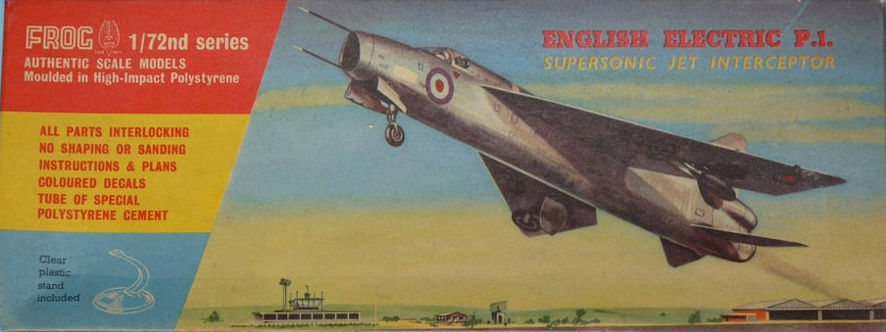
Back in the early 1960s I read that Airfix was about to release a kit of the Lightning so I raced down to the local newsagent and asked them to get one for me – remember the days when you could buy kits at the newsagents? When it arrived it was in a plastic bag, as Airfix Series 2 kits used to come, which meant it cost about 7/6, a kings’ ransom in those days. Even then, though I’d only been making models for four or five years, I was disappointed. It was a very simplistic kit with none of the robustness of the real thing, it was a throw back to the standards of the late 1950s while Airfix was just beginning to embark on its golden age during which it released an endless stream of kits that have only been bettered in the past few years. The first Airfix kit was a F.1A and it was later re-released as a F.3, but the only real difference was the larger tail and some new decals. Still, it was a Lightning and mine sat proudly on my model shelf. But I knew it should have been better.
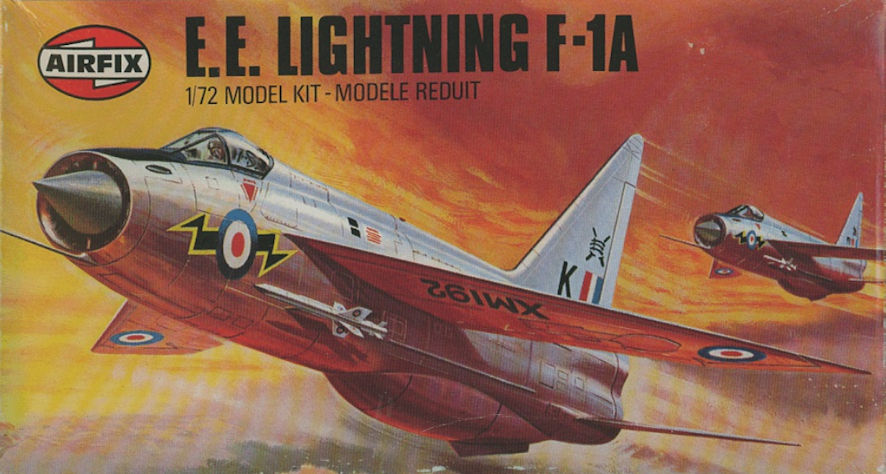
Some years later, probably in the latish 1960s, Frog released a much improved Lightning, this time a F.6. Although it was better in many ways it still did not have the character of a real Lightning, looking thin and weedy in comparison. I later learned that it was actually a Hasegawa kit in a British box and although I probably made one I can’t tell you much about it. You know what they say about the 1960s, if you can remember them you probably weren’t doing the things the 60s were famous for.
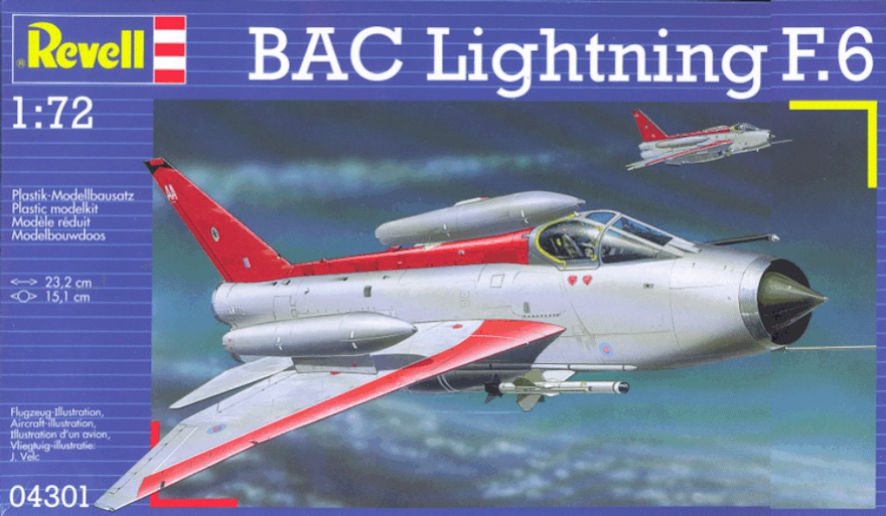
Some time in the 1970s – when my head was back inside my skull – I acquired a Hasegawa Lightning F.6 but it was one of the early generation of Hasegawa kits with none of the finesse of that company’s later kits and I could never bring myself to make it. I was still hoping that somebody would make a decent kit of the Lightning. (You might recall that only recently I was rather disappointed to discover that the new Revell release of the Lightning was only the old Hasegawa kit in a new box.)
It may be that the arrival of the Matchbox Lightning kit, a F.6 that could also be made as a F.2A, put me off the Hasegawa kit. Although the new kit had many of the faults common to Matchbox kits – the famous trench digger, the thickly hewn cockpit canopies, the rugged construction and all the rest – it at least had the ruggedness that matched the real thing. It’s main fault lay in the wings which captured the look of real Lightnings better than previous kits but had a terrible droop that could only be cured with boiling hot water (with all the hazards that that process entails). A Matchbox kit, tolerably well made, could come close to resembling something capturing the sense of the real thing.
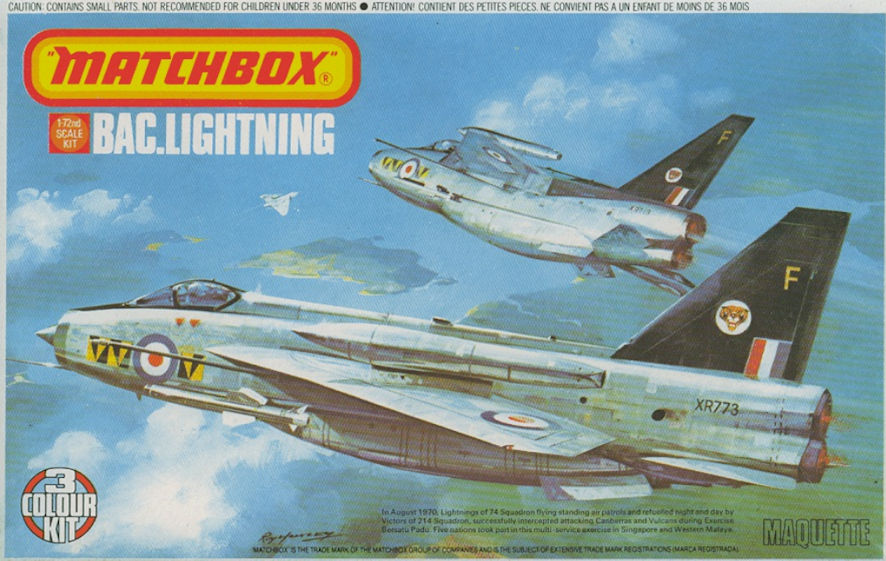
At about the same time after-market companies began offering things like decent replicas of Firestreak and Red Top missiles, ejector seats and a whole range of decals to bring to life the range of colourful markings and schemes Lightnings had carried. Later, Matchbox released a two seater version which turned out to be a T-55. The word was that they had been planning to release a kit of the straight wing T.4 or T.5 but decided to cut costs by using the F.6 wings moulds instead. What a pity.
So, by the beginning of the 1980s there were three kits of the Lightning, none of them very desirable. In the years that followed nothing better emerged. In desperation my fevered imagination devised plans to build a series of Lightning models, ranging from the F.1 through to the F.2A, including most of the units that flew it in all those wonderful colour schemes. I began collecting Matchbox kits and the occasional Airfix kit, and all the other bits and pieces to make these models. I even got around to making a couple of Lightning F.6 models in the 1980s and I embarked on the process of converting some of the F.6 wings to straight F.1 to T.5 wings. However, there were so many problems involved in making decent models from these sad kits that every time the urge came upon me to make some more Lightnings all I had to do was open a couple of boxes and look inside, and the urge quickly subsided. And so the years dragged by with no decent Lightning kit. Long, sad, empty years- if you like Lightnings.
Early in 2008 web sites started circulating rumours that new Lightning kits were coming. About time too, how many kits do we need of Bf109G-6s that were manufactured on 27 April 1944. One would be an Academy Lightning F.6, and Academy make very good kits. However, there is more to the Lightning than the F.6, there are the straight wing varieties with the smaller ventral tanks. Trumpeter announced three Lightning, the F.6/F.2A, the F.1A/F.2 and the F.3. (No suggestion of the T.4 and T.5, but you never know…) So I’ve spent most of 2008 quivering with anticipation.
Then, two Saturday’s back, I turned on the computer, opened the email in-box and saw that latest Hannants blurb. Ho hum, more stuff for more Bf109s, Fw190s and PzKfw IVs. Then, sitting there right on the screen in front of me, there it was, the new Trumpeter Lighning F.6. I could barely hit the order button quick enough, and it is no doubt on the way. Last Wednesday (that’s yesterday) I was in Melbourne earning a crust but had time to drop into Hearns Hobbies. And there it was, the new Trumpeter F.6!!! I walked out with two. On the tram I opened one and peeked inside, and it looked good. In a moment of reflection I realized that this was the kit that I’d been waiting 45 years for. A day later the first one is mostly made, and it is magnificent.
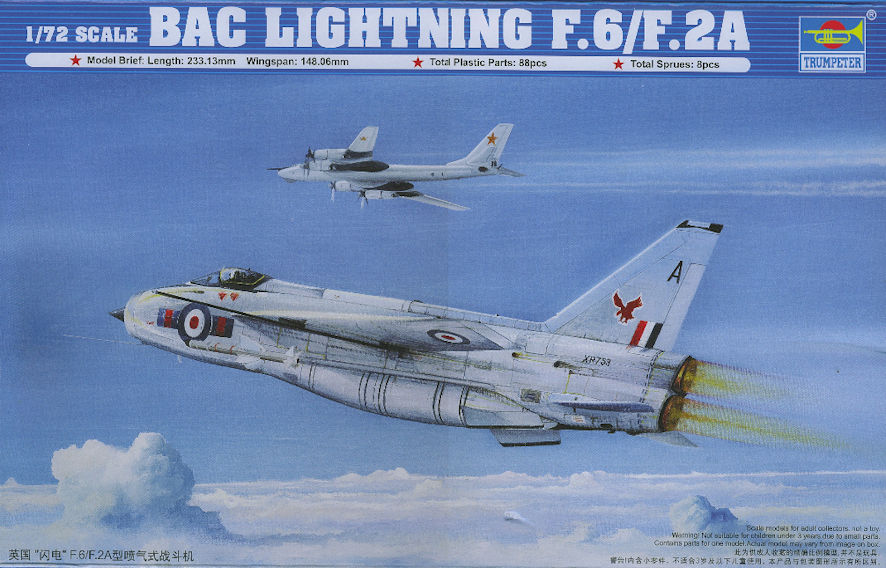
I’ve thought that you guys who make endless Bf109s and Fw190s in specific schemes for a particular pilot, squadron or period of the war were obsessed, but you’ve barely touched the edge of real obsession. If the other Lightning kits coming from Trumpeter are anything like this first one, I will finally be able to give full expression to my obsession.
How many Lightnings will I make? Well, I see that I’ve collected 24 white metal Martin Baker ejector seats over the years. That gives you some hint of what is to come.
Leigh Edmonds
PS. Since I wrote this I’ve made as many Lightnings as I need, 33 in total. That includes all the units that flew the Lighting and a few nice schemes thrown in.
Since then Airfix has published their kit of the Lightning F.6/F2.A and Sword have published their kits of the T.4 and T.5. They are excellent and take care of the one significant problem with the Trumpeter kits, the shape of the rear fuselage around the tail pipes. However only Trumpeter offer kits of the F.1/F.1A and the F.3. So what is a poor modeller to do?